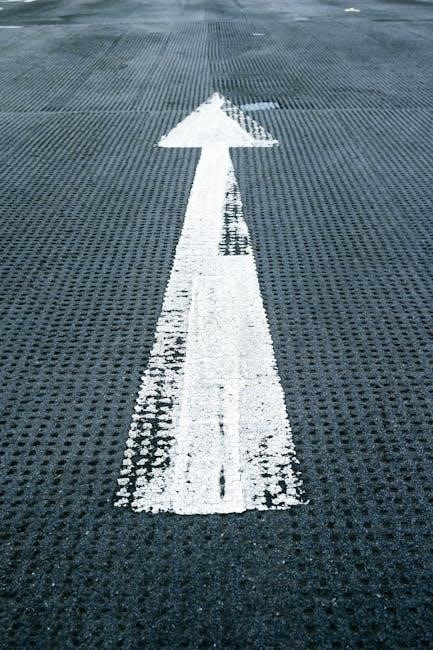cardstock weight guide
Understanding paper weight is essential for creating professional projects, and a cardstock weight guide provides necessary information to make informed decisions about paper selection and usage effectively always.
Understanding the Importance of Paper Weight
Understanding the importance of paper weight is crucial for anyone looking to create professional-looking projects, as it can significantly impact the quality of the final product.
The weight of paper is measured in grams per square meter, and it affects the durability and feel of the paper.
A good understanding of paper weight is essential for making informed decisions about paper selection and usage.
The right paper weight can add a professional touch to marketing materials, invitations, and other printed items.
It is also important to consider the intended use of the paper when selecting a weight, as different weights are suited for different purposes.
For example, a heavier paper weight may be more suitable for business cards or postcards, while a lighter weight may be better for flyers or brochures.
By understanding the importance of paper weight, individuals can create high-quality printed materials that effectively convey their message and leave a lasting impression.
This knowledge is essential for graphic designers, marketers, and anyone looking to create professional-looking projects.
Scenarios Where Choosing the Right Paper Weight is Crucial
Choosing the right paper weight is crucial in various scenarios, including creating marketing materials, wedding invitations, and business cards.
In these situations, the weight of the paper can convey a sense of professionalism and quality.
For instance, a heavier paper weight can add a touch of elegance to wedding invitations, while a lighter weight may be more suitable for everyday printing tasks.
Additionally, the right paper weight can help to ensure that printed materials are durable and long-lasting.
In scenarios where printed materials will be handled frequently, such as business cards or postcards, a heavier paper weight is often preferred.
By selecting the right paper weight, individuals can create printed materials that effectively convey their message and leave a lasting impression.
This is particularly important for businesses and individuals looking to establish a professional reputation.
The right paper weight can help to build trust and credibility with customers and clients.
Effective paper weight selection is essential in many scenarios.

Types of Cardstock Weights
Cardstock weights vary, including lightweight, medium, and heavyweight options, each suitable for different printing tasks and projects always effectively online.
Lightweight Cardstock
Lightweight cardstock is a popular choice for everyday printing tasks, with weights ranging from 90 to 120 gsm, making it ideal for flyers, brochures, and other marketing materials; This type of cardstock is often used for projects that require a lightweight and flexible material, such as direct mailings, catalogs, and newsletters. Its lightweight nature also makes it easy to handle and transport, reducing shipping costs and making it a cost-effective option for businesses and individuals. Additionally, lightweight cardstock is available in a wide range of colors and finishes, allowing for creative freedom and flexibility in design. Overall, lightweight cardstock is a versatile and practical choice for a variety of printing applications, offering a balance of quality, affordability, and convenience. With its many benefits and uses, it is a essential component of any printing project, and its popularity continues to grow among designers and printers.
Medium-weight Cardstock
Medium-weight cardstock is a versatile and widely used material, with weights ranging from 121 to 200 gsm, making it suitable for a variety of printing applications. This type of cardstock is often used for business cards, postcards, and greeting cards, as it provides a sturdy and durable finish. Its medium weight also makes it ideal for menus, invitations, and announcements, where a balance of quality and affordability is required. Medium-weight cardstock is available in a range of textures and finishes, including matte, glossy, and textured, allowing for creative flexibility and design options. It is also a popular choice for craft projects, such as scrapbooking and card making, due to its ease of use and versatility. Overall, medium-weight cardstock is a reliable and practical choice for many printing and crafting applications, offering a balance of quality, durability, and affordability. Its wide range of uses and benefits make it a essential component of any printing or crafting project.
Super Heavyweight Cardstock
Super heavyweight cardstock is a premium material, with weights typically ranging from 300 gsm and above, making it ideal for high-end printing applications. This type of cardstock is often used for luxury items, such as wedding invitations, high-end business cards, and exclusive event invitations. Its exceptional weight and durability provide a sophisticated and elegant finish, making it perfect for applications where a high level of quality is required. Super heavyweight cardstock is also used for packaging and presentation boxes, where its sturdy construction and luxurious feel can enhance the overall presentation of a product. With its high weight and density, super heavyweight cardstock is resistant to bending and tearing, ensuring that it maintains its shape and appearance even when handled extensively. Its premium quality and durability make it a popular choice for applications where a lasting impression is desired, and its versatility allows it to be used in a variety of creative and innovative ways.

Calculating Paper Weight
Calculating paper weight involves understanding basis weight, and using online tools or calculators to determine the weight of specific paper types and sizes effectively always with accuracy and precision methods.
Explaining Text Weight and Cover Weight
Understanding the difference between text weight and cover weight is crucial in selecting the right paper for a project. Text weight refers to the weight of paper used for printing text, typically ranging from 60 to 100 gsm. Cover weight, on the other hand, refers to the weight of paper used for covers, cards, and other applications where a heavier paper is required, typically ranging from 150 to 400 gsm. The main difference between text weight and cover weight is the thickness and durability of the paper, with cover weight being thicker and more durable. This difference is important to consider when selecting paper for a project, as using the wrong weight can affect the overall quality and appearance of the final product. By understanding the difference between text weight and cover weight, individuals can make informed decisions about paper selection and ensure their projects turn out as intended.
How Paper Weight is Calculated
Calculating paper weight involves measuring the weight of a ream of paper, which is typically 500 sheets; The weight is usually expressed in grams per square meter (gsm) or pounds (lb). To calculate the weight, the paper is cut to a standard size, and the weight of the ream is measured. The weight is then divided by the number of sheets to determine the weight per sheet. This calculation provides a standard unit of measurement for comparing different types of paper. The calculation takes into account the density and thickness of the paper, allowing for accurate comparisons between different paper stocks. By understanding how paper weight is calculated, individuals can better navigate the world of paper selection and make informed decisions about the right paper for their projects. This knowledge is essential for achieving the desired look and feel of a printed project. Paper weight calculation is a critical step in the paper selection process.

Cardstock Thickness Guide
Cardstock thickness is measured in calipers or points, affecting the durability and flexibility of the paper, guiding the selection process for various projects and applications effectively always online.
Common Projects That Use Cardstock
Cardstock is a versatile paper product used in various projects, including scrapbooking, DIY crafts, and educational materials. Many artists and designers use cardstock to create unique and durable pieces, such as handmade cards, gift tags, and 3D models. Cardstock is also commonly used in office settings for printing business cards, postcards, and greeting cards. Additionally, cardstock is used in schools for creating visual aids, presentations, and displays. The thickness and weight of cardstock make it an ideal choice for projects that require a sturdy and long-lasting material. With its wide range of uses, cardstock has become a popular choice among crafters, artists, and professionals alike. The variety of cardstock weights and textures available also makes it suitable for different types of projects, from delicate crafts to heavy-duty presentations, making it a valuable resource for anyone looking to create high-quality materials.
Measuring Cardstock Weights and Differentiating from Other Paper Products

Measuring cardstock weights is crucial to determine its suitability for a particular project. Cardstock weights are typically measured in grams per square meter (gsm) or pounds (lb). To differentiate cardstock from other paper products, it’s essential to consider its thickness, texture, and finish. Cardstock is generally thicker and more durable than regular paper, making it ideal for projects that require a sturdy material. The weight of cardstock can also affect its printability and finish, with heavier weights producing a more luxurious feel. By understanding the different measurements and characteristics of cardstock, users can make informed decisions when selecting the right paper product for their needs. This knowledge also helps to distinguish cardstock from other paper products, such as tissue paper or construction paper, and ensures that the chosen material meets the project’s requirements, resulting in a professional-looking finish. Various tools and methods are available to measure cardstock weights accurately.